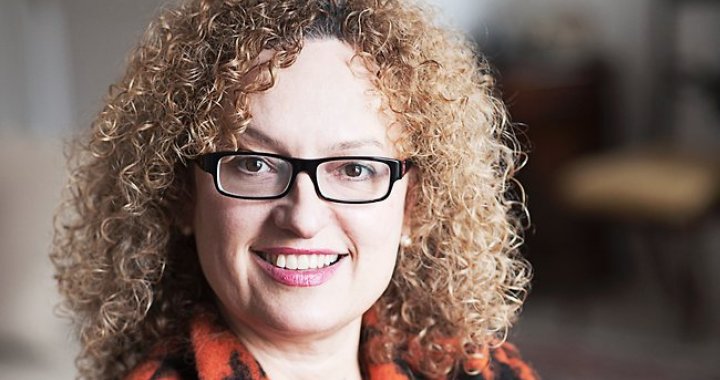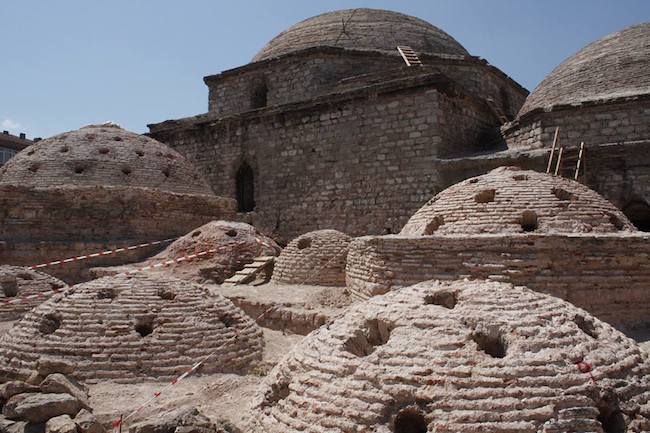
The Transformation of Material
Conversation with Carolyn Christov-Bakargiev and Irene Gludowacz* about the 14th Biennale of Istanbul: “SALTWATER – A Theory of Thought Forms”
06/08/2015
The 14th Istanbul Biennial “SALTWATER – A Theory of Thought Forms” is open to the public from September 5 to November 1 in over 30 venues on the European and Asian sides of the Bosphorus, from the Black Sea to the Sea of Marmara, from Beyoğlu to Büyükada, from Rumelifeneri to the old city and from Şişli to Kadıköy
Carolyn Christov-Bakargiev was born in the United States to Italian-Bulgarian parents and grew up in Washington and in Italy. Her father was a doctor and her mother was an archeologist. She studied literature, philology as well as languages and art history in Pisa. From 1999 to 2001, she was senior curator at PS1 Contemporary Art Center, a MoMA affiliate, in New York and from 2002 to 2008 she was chief curator at the Castello di Rivoli Museum in Turin where she also became interim director in 2009. In 2008 she was appointed the artistic director for the 16th Biennale of Sydney: Revolutions – Forms That Turn. She was the second woman to direct documenta, and the first American and Italian. dOCUMENTA (13) took place in Kassel in 2012 and simultaneously in Kabul, Afghanistan, Alexandria and Cairo, Egypt and Banff, Canada. Christov-Bakargiev was recently appointed as Director of Castello di Rivoli Museo d’Arte Contemporanea and GAM – Galleria Civica d’Arte Moderna e Contemporanea di Torino, commencing on January 1, 2016.
In the Istanbul Biennial 2015, she has built alliances with fifteen colleagues and friends. With some of them she has long-standing relationships and has worked together in the past. They give assistance in various aspects such as intellectual and philosophical thinking, or writing a text for the catalogue and they decide themselves how they wish to contribute. Additionally, she has created an International Council of Friends and Patrons, the honorary chairman of which is the Turkish writer and Nobel prize winner for literature Orhan Pamuk, whose Museum of Innocence became an exhibition venue for the Biennial.
Christov-Bakargiev is married to the Italian artist Cesare Pietroiusti and has two daughters.

14th Istanbul Biennial logo
What made you become a curator?
Personally, I do not use the word curator. I used it when I was younger but now it has become a kind of privileged word and a sign of power in the art world. It has also become a synonym of someone who just selects objects and puts them together according to their personal taste or discourse. I like the term “exhibition maker” much more. In Istanbul I use the word “draftsperson”, someone who makes the draft, and “to draft” means “to draw”.
My mother was an archeologist and she had a very special way of putting things together, of installing themand organizing and decorating the house with objects that she would find. During the Vietnam War she hosted demonstrators who were coming to Washington, and when I woke up in the morning as a child I never knew who was sleeping in the house. I think that dOCUMENTA (13) and any exhibition I did was a recreation of that atmosphere: on one hand the liveliness of so many people in the house, and on the other hand the presence of the objects she collected, some precious and some found on the street. The importance of the relationship between material culture, the history of the past and the politics of the present.

Venue of the biennal: Rumelifeneri Lighthouse
The title of the Istanbul Biennial is very well chosen. I would like to know more about SALTWATER…
SALTWATER is ultimately where one is: on the Bosphorus and surrounded by saltwater. At the same time that particular saltwater at the Bosphorus is made of currents – going into opposite directions. One current is less deep and drives you from the Black Sea to the Marmara Sea. If you are a bit lower – like the ancient fishermen knew as they would put their anchor lower – a reverse current extends from the Marmara/Mediterranean Sea to the Black Sea. The reason for this is that the density of salt in the water in the Black sea is lower than the density of salt in the Mediterranean Sea. The Black Sea was in ancient times a lake and the Bosphorus opened up about 2500 B.C. The name “Bosphorus” comes from the word βοὸς πόρος, (cow passage). It is a passage where things can crank, move or crack. I wanted to refer to all these currents under the surface of modern Turkey.
There is also another thing – “before the encoding unfolds” – here I am referring to all these layers – more salt or less salt that provokes these movements of water – all around the world. It is not so much the rotation of the earth or the wind. The waves and currents are connected to the differences of salt. There are currents of people, of ideas, of wars, of arms, of love – of everything, but they are not always so visible. There is always a kind of archeology and psychoanalysis, and both of them are part of my research tools.

Venue of the biennal: Küçük Mustafa Paşa Hammam
Beside the historical and geographical aspects, what is the connection to contemporary art and life?
I also refer to digital technology with the title “SALTWATER”. Salt is the most dangerous element for the digital world. If you put a mobile phone into water – not salt water – and you dry it for several days and put it in a bowl of rice, it can work again. If you put it into saltwater, it will not because salt is the most corrosive element for copper and for the micro circuits that we use in digital devices. It is the chemical infiltration between salt and water which is dangerous for technology. Salt’s negative ions attract parts from unstable molecules which they basically deconstruct. I come from Arte Povera and I always think about chemical transformations and the environmental effects on materials. If you think of sculptors two hundred years ago they were encountering the agency of the materials too. They knew how the material reacts, what the material “wants” in terms of carving, which tools were needed, and they found the best way for the material to express itself. With the detachment of the mind and body in modernity, to take a material and make something with it and even force it to work is the opposite. To me being an artist you need to understand these agencies. It is like to surf with the saltwater: you have to navigate with the wind, you have to be able to wait for hours until the wave comes, you have to know that there will be probably seven waves before the one you are going to surf with.
It does have to do with art but in a broader sense it has also to do with the politics of the technology we use, and its fragility. This whole universe of power is actually very fragile. This is what alchemy and philosophy also were about. All of this thinking is behind the exhibition SALTWATER.

Venue of the biennal: Trotsky House
How will you integrate the researches of oceanographers and neuroscientists into the Biennial?
Most artists I know are bored to be in an exhibition with only other artists, salon-style. What they really like is hanging out with physicists like Anton Zeilinger, or oceanographers like Emin Özsoy, because they are inspired by science and they want to share knowledge. I do it for the artists and not for science. The world of power makes these divisions between the humanities and the physical sciences – but the artists do not.
* Based in Vienna, Irene M.Gludowacz M.A is an author, curator and communication expert for foundations, museums and corporations in the international art world. She is also the co-author of the books “A Passion for Art: Art Collectors and Their Houses” (2005) and “Global Art” (2009)